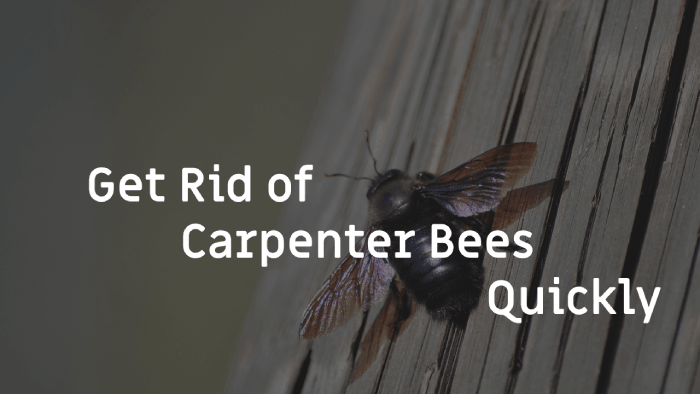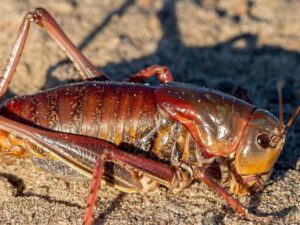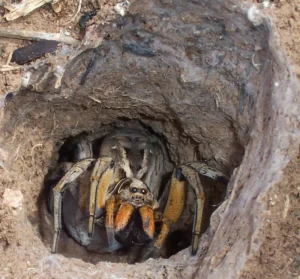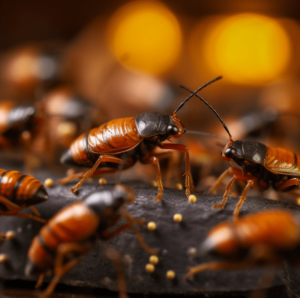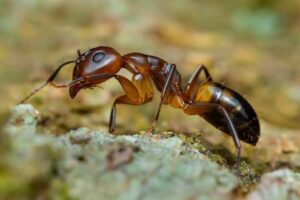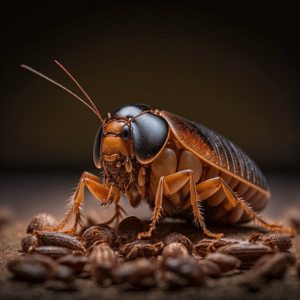Have you noticed holes in wood within your home? Maybe you have large noticed bulbous, black, rounded insects buzzing around the eaves, window trim, fascia boards, siding, wooden shakes/shingles, or decks? If so, you most likely have carpenter bees on your property. This large species of bee do not bite but the female will sting if aggravated. The more serious problem with these bees is the damage they cause by boring holes and tunnels through the wood. Such damage to the wood affects your property’s visual appeal and can also weaken wooden structures. If you are wondering how to get rid of carpenter bees, this post explores different tactics, including sprays, repellents, and traps.
Effective Methods for Getting rid of Carpenter Bees in 2022
|
Editor’s Picks |
Brand |
|---|---|
|
Most Effective |
|
|
Best Trap |
|
|
Best Spray |
|
|
Best Home Barrier Treatment |
No products found.
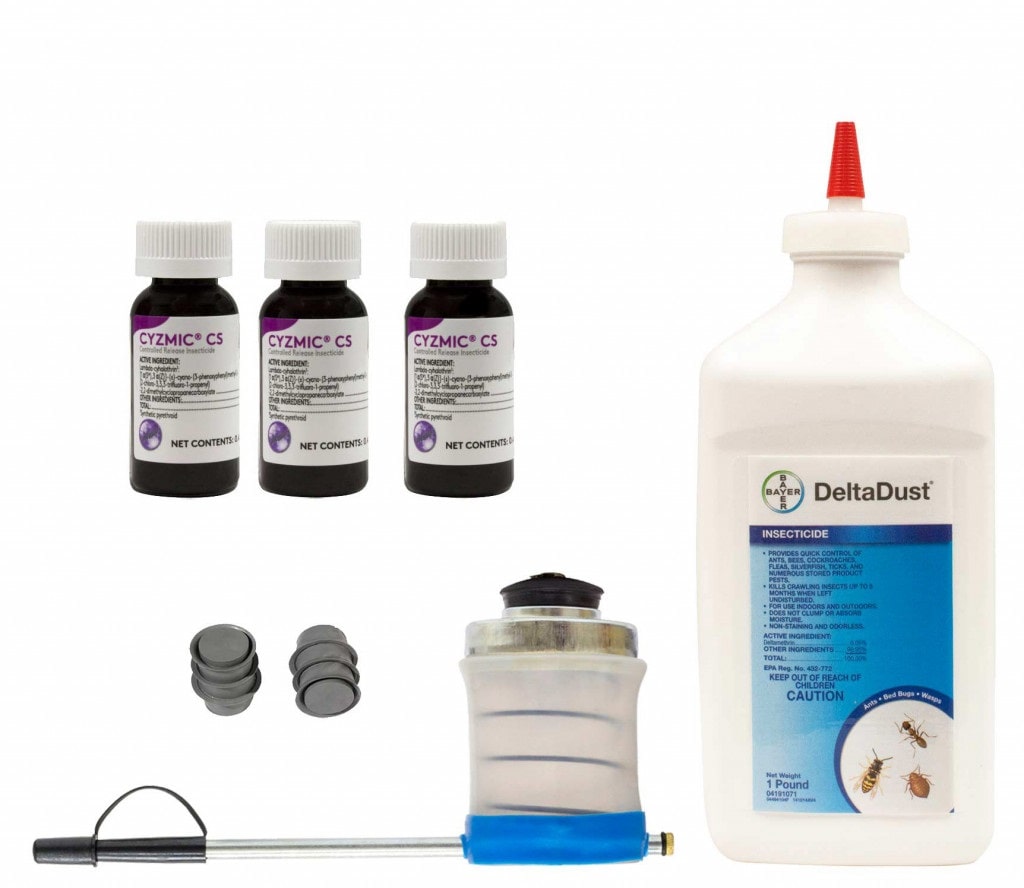
Most Effective: Delta Dust Insecticide
This product ranks as one of the most effective because it can help remove numerous pests in addition to carpenter bees. These include ants, bedbugs, cockroaches, fleas, silverfish, scorpions, sowbugs, and millipedes. The active ingredient in the pest dust is 0.05% Deltamethrin, which kills any pests that come into contact. 1 lb. Delta dust treats a large area of approximately 1000 square feet. The carpenter bee dust remains active for up to 8 months when left undisturbed. It is Odorless and non-staining, making it is ideal for both indoor and outdoor use. It doesn’t clump or absorb moisture which increases its active lifespan. When applied to wood surfaces outdoors, it kills any carpenter bees. Make sure you plug any holes on wood several hours after applying the dust to confirm the carpenter bee is dead. This product works for the removal of these pests and also as a carpenter bee repellent.

Best Carpenter Bee Trap: Patent No. RE46.421
There are different carpenter bee traps on the market but before buying one, you need to evaluate how it works. This innovative carpenter bee trap is creating a buzz in the market due to its simple yet effective design. The trap is made to mimic the natural nest of a carpenter bee, which attracts the pests and is pre-baited with natural scent.. Once they are inside, they fall into a holding jar below the wooden trap where they die. The trapped bees also become effective bait for attracting others. The trap works for different types of bees and carpenter bees, and it’s made to withstand extreme weather. You should hang it where you have spotted carpenter bees and as the jar below continues filling, you can empty it to leave more room for new catches.
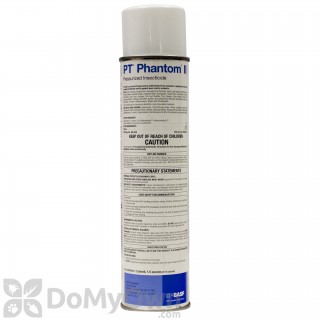
Best Spray: PT Phantom II Pressurized Insecticide
This carpenter bee spray is highly effective due to the use of foaming aerosol. This foam here expands to burrowed areas where insects live. There’s also an extension tube allowing you to spray into hard-to-reach areas. If you have been struggling with how to get rid of carpenter bees, PT Phantom II is the right product for you. You can use it to treat active carpenter bee tunnels which means the bees will distribute the active ingredients inside tunnels. This protects against further carpenter bee damage on your property. Once you have sprayed inside holes and tunnels, plug the entrances to prevent re-infestation. Plugging also reduces the chances of wood decay by preventing moisture entry.
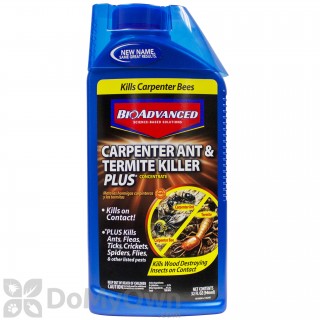
Best Home Barrier Treatment: Bio Advanced Carpenter Ant & Termite Killer Plus Concentrate
If you are looking for the most effective way to repel and kill carpenter bees, it’s time to try the Bayer Advanced Concentrate. It has an active ingredient Cyfluthrin which works to kill carpenter bees, ants, fleas, ticks, crickets, spiders, and flies. In total, this pesticide kills over 75 insects. From wood-infesting, crawling, flying insects to stinging insects, you now have an effective technique to protect your family and your home. This product helps to get rid of carpenter bees and against wood-damaging and home-invading insects. If you have a lot of wooden structures around your property, this is a great barrier treatment to protect your home. You can use it on your deck and patio, woodpiles, lawn, landscaping, foundation, trench, and other home structures. It is easy to use and you only need to add water to the concentrate as directed. You can then use an Ergo-grip, battery-operated sprayer or tank sprayer to apply the mixture on all wood surfaces on your property.
Home Remedies to Get Rid of Carpenter Bees
- Natural citrus spray.
- Apply almond oil or essence around the carpenter bee nest
- Plug up the entrances
- Replace all wooden materials
Do-It-Yourself Solutions and Traps
Natural Citrus Spray
Carpenter bees hate the acrid smell of citrus fruits and this is a simple way to get rid of them.
- Peel citrus fruits and boil the rinds in water
- Get a spray bottle and fill it with the citrus-extract water
- Spray the carpenter bee burrows and be wary of the female carpenter bee sting.
Almond Oil
Almond oil, like most other essential oils, is a natural insect repellent. If you have noticed any carpenter bees, holes or tunnels, use cotton wool or a soft cloth to apply almond oil around the affected areas. This repels the pests from burrowing further around the wood surface.
Plug Up the Entrances
One of the easiest ways to disrupt carpenter bee infestation is by plugging their nests using wood putty, corks, dusted plugs, copper gauges, and other such materials. This might discourage the bees from nesting on the wood though they can still burrow their way out.
Replace All Wooden Materials
If you have noticed many holes and tunnels on wood surfaces, replacing the affected parts is a great tactic. This ensures there are no larvae hidden inside these nests. Make sure the new wood you use is treated and painted to discourage further damage by carpenter bees.
What Kind Of Spray Will Help?
Citrus spray is one of the most effective sprays to get rid of carpenter bees. Most insects have a natural aversion for citrus spray. You can easily prepare this spray by cutting rinds of citrus fruits and boiling them in a little water. Use a spray bottle to reach inside the holes and also apply to the unaffected surface of the wood.
Interesting Facts about Carpenter Bees
- Male carpenter bees lack stingers
- At no point in their lifecycle do carpenter bees consume wood
- Carpenter bees are creatures of habit. They return to the same location of their birth, year after year. They re-use existing holes and drill new nests as their population swells.
- Unlike honey bees, carpenter bees don’t live in hives but create individual nests
- Carpenter bees produce sound waves. Buzz pollination is a process where these bees shake pollen from their bodies.
- The blue carpenter bee is unique with light blue hairs covering its thorax region to give it a striking blue color. This contrasts with the common carpenter bee which is primarily black with some yellow or white areas.
- they can bore tunnels up to 10 feet long
- These bees live on every continent except Antarctica.
- Carpenter bees use their strong jaw through vibrations to tunnel through wood.
How to Prevent Carpenter Bees
Carpenter bees can cause a lot of damage to your property. Instead of waiting to get rid of them, there are different ways to prevent their infestation. Take a look:
- Spraying citrus scent on wood to repel carpenter bee nests
- Using essential oils such as lavender oil, Tea tree oil, Jojoba oil, and Citronella oil to spray around wooden surfaces outdoors.
- Varnish or paint the walls and all wooden surfaces on your property using borate and wood preservatives on untreated and unpainted wood
- Seal any openings you see on wooden surfaces with plugs, caulk, and other materials. Try this in the fall after the bees have emerged.
- Wrap vinyl or aluminum around fascia boards to prevent carpenter bees from nesting here.
- Use traps to catch the bees before they start building nests on wood in your home.
FAQ
How To Kill Carpenter Bees?
You can either use insecticides, traps, or aerosol sprays to kill carpenter bees. Blocking their holes is another natural way to kill these bees.
Can Carpenter Bees Sting?
Yes. The female carpenter bee has a stinger but only uses in when highly disturbed.
How To Make A Carpenter Bee Trap?
Create a wooden box with a hole to mimic one created by a carpenter bee. Beneath this box, add a glass jar with a narrow opening. These bees will get inside the box and fall into the glass jar.
Do Carpenter Bees Pollinate?
Carpenters bees are pollinators in native plant communities, gardens, and in some crops. When feeding on nectar, they pick up and transfer pollen.
How To Get Rid Of Carpenter Bees Naturally?
Use essential oil such as Jojoba oil, lavender oil, Tea tree oil, and Citronella oil and spray it inside their nests and other wood surfaces. Plugging carpenter bees’ holes, using citrus spray and traps are other natural ways to get rid of these pests.
How To Keep Carpenter Bees Away?
Treat any unfinished wood on your property, plug any holes to avoid the bees’ return and apply oils and sprays that repel these bees.
What Do Carpenter Bees Eat?
Carpenter bees are pollinators and hence eat nectar and pollen from flowering plants

